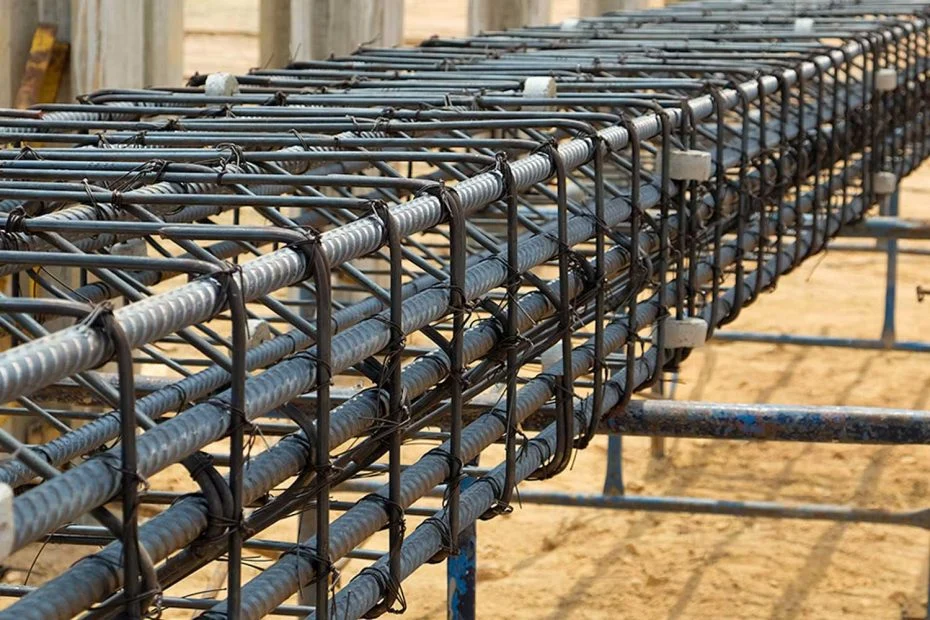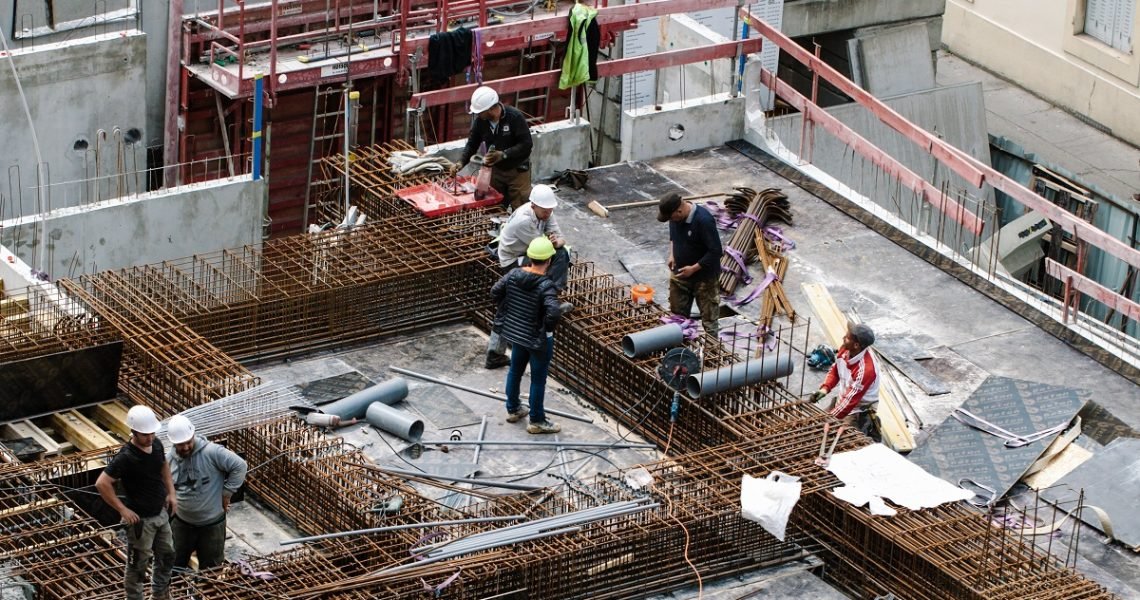Why Steel is Essential in Residential Construction
Steel plays a pivotal role in residential buildings, offering benefits that traditional materials like wood or brick often can’t match. Here’s why steel is indispensable:
- Strength-to-Weight Ratio
Steel has a high strength-to-weight ratio, meaning it can bear substantial loads without adding excessive weight. This property is ideal for multi-story homes or areas prone to natural disasters. - Durability
Unlike wood, steel doesn’t warp, shrink, or rot, making it a long-lasting choice. It’s also resistant to pests like termites, ensuring structural integrity for decades. - Sustainability
Steel is 100% recyclable, making it an eco-friendly material. Using recycled steel in construction reduces the demand for raw materials and minimizes environmental impact. - Design Versatility
From open floor plans to unique architectural features, steel allows architects to create innovative designs without compromising structural stability.
How Much Steel is Used in Residential Projects?
The amount of steel used in residential construction varies widely based on several factors, including the type of building, its design, and the load requirements. Let’s break down the typical usage:

- Steel in Framing
Steel framing is becoming a popular alternative to timber. For an average single-family home, around 4 to 6 tons of steel may be used in framing, depending on the size and complexity of the structure. - Steel in Reinforced Concrete
Reinforced concrete uses steel rebar to provide tensile strength. A standard two-story home can use approximately 2 to 4 tons of steel rebar, depending on the foundation size and slab thickness. - Roofing and Siding
Lightweight steel is commonly used in roofing and siding. For a 2,000-square-foot home, around 1 to 2 tons of steel might be required for these purposes. - Other Applications
Steel is also used in doors, windows, staircases, railings, and even decorative elements. These uses can add another 1 to 2 tons of steel per home.
Factors Influencing Steel Usage in Residential Construction
1. Type of Construction
- Traditional Homes: Steel is primarily used for reinforcement and roofing.
- Prefabricated Homes: These structures rely heavily on steel for both framing and panels, significantly increasing steel usage.
2. Building Design and Load Requirements
Complex designs, such as cantilevered structures or large open spaces, require more steel to ensure stability and safety.
3. Geographic Location
Areas prone to earthquakes, hurricanes, or heavy snowfall demand higher steel content for added resilience.
4. Sustainable Practices
Builders focusing on sustainability often use recycled steel, which is just as strong as new steel but more environmentally friendly.
Steel vs. Traditional Materials
Cost Efficiency
While steel may have a higher upfront cost than materials like wood, its durability and low maintenance requirements make it more cost-effective over the lifespan of the building.
Speed of Construction
Steel components are often prefabricated, reducing construction time compared to traditional methods.
Safety and Resilience
Steel structures are better equipped to withstand natural disasters, offering peace of mind to homeowners in high-risk areas.
Benefits of Using Steel in Residential Construction
1. Sustainability
Steel is endlessly recyclable, with no degradation in quality. Using steel in construction aligns with global efforts to reduce carbon footprints.
2. Fire Resistance
Steel doesn’t ignite or burn, offering enhanced protection in fire-prone areas.
3. Space Optimization
Steel framing requires less space than traditional timber, allowing for more usable floor area within the same footprint.
4. Ease of Renovation
Steel structures are easier to modify or expand, accommodating changing homeowner needs over time.
Rebar: The Backbone of Residential Construction
Steel plays a critical role in the construction industry, particularly in residential buildings where structural strength and durability are key. Among steel products, rebar (reinforcing steel bars) is the most commonly used in residential construction. It forms the core of cast-in-place concrete methods, providing the reinforcement needed for stability and longevity. This blog delves into the importance of rebar, its applications in residential construction, and how it contributes to modern housing projects.
Why Rebar is Key in Residential Construction
Rebar is indispensable in residential construction due to its ability to enhance the tensile strength of concrete, which is otherwise strong in compression but weak in tension. The primary use of rebar is to prevent cracks and withstand forces, ensuring the longevity and safety of structures.

Applications of Rebar
Rebar is extensively used in:
- Foundations
- Reinforces the base of buildings, enabling them to support significant loads.
- Walls
- Ensures vertical stability and prevents cracking under lateral forces.
- Floor Slabs
- Enhances load distribution across the surface, reducing stress points.
- Roof Elements
- Provides structural support for roof decks, ventilation ducts, and parapets.
Concrete and Rebar: A Perfect Combination
The use of rebar in cast-in-place concrete construction is standard practice for foundations, monolithic sections, and floor slabs. This combination creates robust and durable buildings that can withstand environmental stresses and long-term wear.
Rebar Usage in Residential Projects
The quantity of rebar used in a residential building varies depending on the project’s design and complexity. Here are some insights based on industry data:
- For a 9-Story Brick House
- A building with an area of 480 square meters requires approximately 21 tons of rebar.
- Including Underground Parking
- Adding an underground parking structure increases rebar requirements by another 10 tons.
These figures highlight the material-intensive nature of reinforced concrete construction, with rebar being the primary steel component.
Other Steel Products in Residential Construction
While rebar is the dominant steel product, other types of steel are used for specific purposes, including:
- Pipes
- Used for utility networks, water supply, and heating systems.
- Ground-Floor Window Grates and Armored Doors
- Enhance security in residential buildings.
- Steel for Playgrounds and Landscaping
- Includes structures for playground equipment, shelters, and decorative installations.
Innovative Uses of Steel in Residential Projects
In addition to traditional applications, steel products are now being used in innovative ways to improve functionality and aesthetics in residential buildings.
Steel Frames and Rolled Metal Products
Although more common in non-residential construction, steel framing is slowly gaining traction in residential projects for its ability to:
- Create additional living or office space without significant load increases.
- Form complex geometric shapes for modern architectural designs.
Facade Structures
Steel closed sections are used to make curtain walls and facade systems, offering:
- Enhanced environmental resistance.
- Reduced maintenance due to corrosion-resistant coatings.
Emergency Staircases and Utility Installations
Rolled metal small sections are essential for building hardscaping elements such as:
- Emergency exits.
- Equipment holders and advertising structures.
Metal Consumption Trends in Residential Construction
Production and Exports of Rebar
Between 2016 and 2018, Ukrainian iron and steel plants produced between 2.8 to 3 million tons of rebar annually. However, the majority (2.1 to 2.2 million tons) was exported, leaving around 1 million tons for domestic construction, with a significant portion allocated to residential projects.

Market Dynamics
According to the State Statistics Service, the volume of residential construction in Ukraine grew by 23.6% in 2018, reaching UAH 29.3 billion. This upward trend reflects increasing demand for steel products, particularly rebar, driven by macroeconomic improvements and a growing housing market.
Factors Affecting Steel Usage in Residential Construction
Several factors influence the amount of steel used in residential projects:
- Macroeconomic Conditions
- Economic growth and household income levels directly impact construction volume.
- Affordable Mortgages
- Access to financing encourages new housing developments, driving demand for steel.
- Design Specifications
- Larger or more complex designs require higher steel input for reinforcement.
- Investor Confidence
- Strong legal protections and a stable market environment promote investment in residential projects.
Cautious Optimism in the Residential Construction Sector
The residential construction sector in Ukraine has shown steady growth in recent years, fueled by increasing demand and favorable economic conditions. In 2018, the total area of residential buildings with construction permits reached 12.9 million square meters, marking a 13.2% increase from the previous year.
With the projected GDP growth and continued investment in housing, the future looks bright for steel manufacturers and suppliers catering to the residential market.
Future Trends in Residential Steel Usage
1. Lightweight Steel Construction
Advances in technology are enabling the production of lighter yet stronger steel, reducing transportation and installation costs.
2. Smart Steel Integration
Smart steel products, such as those embedded with sensors, are gaining traction. These sensors can monitor structural health in real-time, providing early warnings for maintenance needs.
3. Modular Construction
The modular construction industry heavily relies on steel for its prefabricated panels and frames. This trend is expected to grow as demand for affordable housing rises.
4. Advanced Coatings for Longevity
Innovations in coatings, such as anti-corrosion and self-healing finishes, are enhancing the durability of steel in harsh environments.
Case Study: Steel’s Role in Sustainable Housing
In Australia, a growing number of residential projects are using steel to align with sustainability goals. For example, using recycled steel in the framing of a single-family home saved approximately 10-15 tons of CO2 emissions compared to virgin steel production.
Similarly, prefabricated steel components have reduced construction waste by up to 30%, demonstrating the material’s potential to revolutionize green building practices.
Challenges in Using Steel for Residential Construction
1. Cost Concerns
The price of steel can be volatile, influenced by global demand, trade policies, and raw material availability.
2. Skilled Labor Requirements
Working with steel requires specialized skills, which may not be readily available in some regions.
3. Thermal Conductivity
Steel is a good conductor of heat, necessitating additional insulation to achieve energy efficiency in homes

Conclusion
Steel’s unmatched strength, sustainability, and versatility make it an indispensable material in modern residential construction. As building practices evolve, steel will continue to play a pivotal role in shaping the homes of the future. By choosing high-quality steel and innovative designs, builders can ensure their projects are not only durable and cost-effective but also environmentally friendly.
Rebar is undeniably the backbone of residential construction, offering strength, durability, and flexibility in design. Alongside other steel products, it plays a vital role in shaping modern housing projects. As the construction industry evolves, the demand for high-quality steel will continue to rise, driven by innovation, sustainability, and market growth.
At Lux Metal, we’re committed to providing top-notch steel solutions for residential construction. Whether you need rebar, pipes, or custom steel products, our team is ready to meet your needs with precision and excellence. For your next residential construction project, trust Lux Metal to deliver superior steel solutions tailored to your needs.
Explore our range of services at Lux Metal.
Lux Metal: Your Partner in Steel Excellence
At Lux Metal, we understand the transformative potential of steel in residential construction. Our expertise in customized steel solutions ensures every project meets the highest standards of quality, sustainability, and innovation.
Why Choose Lux Metal?
- Advanced manufacturing techniques for precise steel components.
- Sustainable practices that prioritize environmental responsibility.
- Tailored solutions for residential, commercial, and industrial projects.
Explore Lux Metal’s range of customized solutions at Lux Metal.

